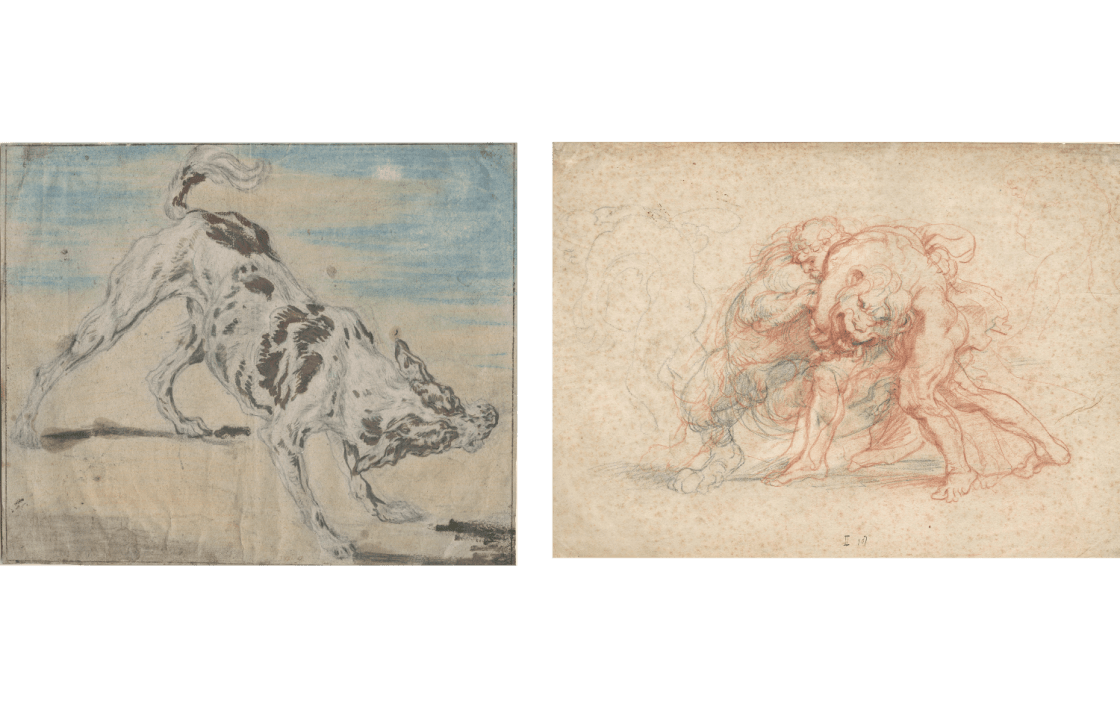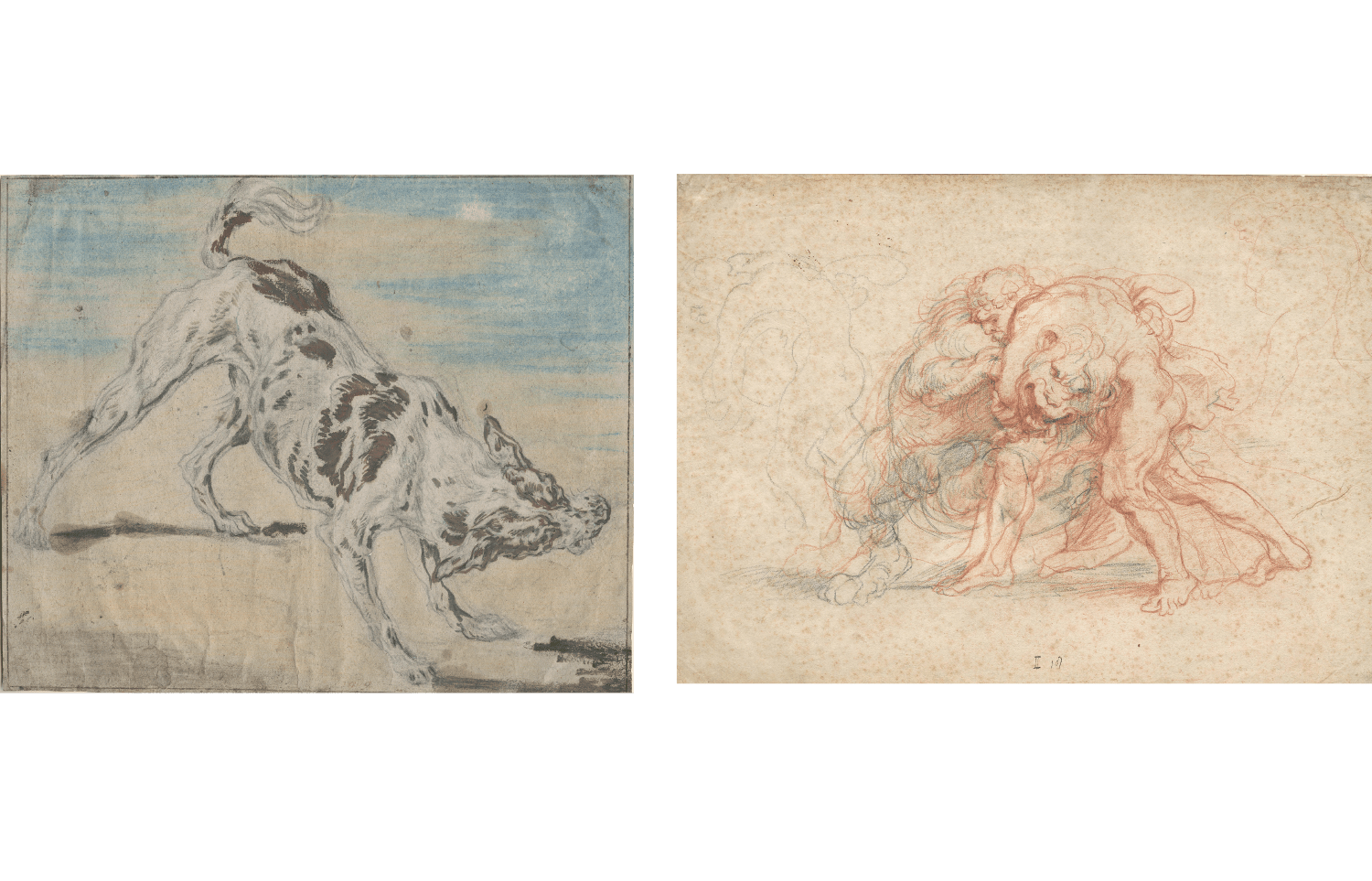The term drawing is a broad umbrella, so in an exhibition of 120 works it helps to outline some distinctions. A good place to start is to ask what drawings are for, and that is what Oxford’s Ashmolean Museum has done with its current show of sketches by Flemish masters – staged in collaboration with Antwerp’s Museum Plantin-Moretus – dividing them into studies, designs and stand-alone finished works.
Van Dyck’s teenage studies are a measure of how flabby our ideas of draughtsmanship have become
If you’ve ever had the chance to visit it, you’ll know what a special place the Plantin-Moretus is. Still occupying the original premises in which it was founded as a printworks in the 16th century, it sits on a hoard of drawings by the great names of Flemish art dating back to a time when Antwerp was at the centre of a booming trade in prints, metalwork, stained glass and tapestry, all of which began with drawings on paper. The design section features drawings of breath-taking intricacy – the world of interiors can never have witnessed towel racks more spectacular than those designed by Paul Vredeman de Vries – but for lovers of drawing rather than design, the studies and stand-alone works are this show’s most exciting attraction.
The teenage prodigy Anthony van Dyck’s astonishing ink and wash study for his first public commission, ‘The Carrying of the Cross’ (c.1617-18) – even allowing for his use of the Tipp-Ex of the day to make corrections – is a measure of how flabby our ideas of draughtsmanship have become. In life classes today, where they’re still taught, students learn how the human body moves under its clothes; in Van Dyck’s day they worked out how it moves under its skin. Forget those cute little wooden jointed artists’ mannequins; to delineate the calf muscles in this drawing, the young Van Dyck will have used a statuette of a flayed human corpse – unless, that is, Rubens let his star assistant borrow his anatomy book of drawings of skinless bodies.
Rubens was a different order of prodigy. In his drawing after Hans Holbein’s woodcut of ‘The Abbot and Death’, he turns the dance of death into a jive; he was 13 at the time, but he never grew out of improving on other artists’ work, retouching master drawings in his collection to fatten up their women to his taste. His creative energy infused everything he touched, even stone: a Pygmalion with a brush, he put a twinkle in the eye of his ink study of a Roman statue of ‘Mars Ultor’. In his scrambled action drawing of ‘Hercules Strangling the Nemean Lion’, Hercules has five legs and the lion has balls.

Rubens gets the lion’s share of studies here, plus a dazzling portrait drawing of Thomas Howard, 2nd Earl of Arundel (c.1629-30, see above). Pieter Bruegel I is represented by a riotous ‘Temptation of Saint Anthony’ (c.1556) full of Boschian monsters and a marvellously atmospheric ‘Landscape with a Village and Cattle’ (c.1554); his son Jan Brueghel I goes one better with a limpid ‘Hilly Landscape (c.1615-18) in two-tone blue and sepia watercolour as minimalist as a Turner ‘colour beginning’, but with intimations of distant detail of which Turner, never a draughtsman, would not have been capable. Equally exquisite is the personalised still life dedicated by Joris Hoefnagel to his friend the cartographer Ortelius in 1593, illustrated with butterflies, a dragonfly, a caterpillar, drawing implements and Athena’s owl perched on a globe – though this is strictly a painting rather than a drawing, unlike the contemporary nature study of an earthworm’s locomotion by an anonymous hand.
Landscape is the field of drawing in which artists are freest to enjoy themselves. Jan Siberechts’s curvaceous pen and wash ‘Study of an Old Gnarled Oak’ (c.1661-72) is a world away from his regimented views of English country houses, and Rubens’s slant on a ‘Woodland Scene’ (c.1635-40) near his Het Steen estate feels like a personal record of a much-loved place with little concern for composition, every tree put in because it was there.
The design section features drawings of breathtaking intricacy – including spectacular towel racks
But my vote for landscape artist of the exhibition goes to Anon for ‘Mountainous Landscape with a Bridge’, dashed off at speed in chalk on tinted paper. It reminds me of the work of Roelandt Savery, now mainly remembered for having immortalised the last remaining dodo in the aviary of Rudolf II while serving the Holy Roman Emperor’s court in Prague. But Rudolf also sent his Flanders-born artist to the Tyrol to get a lowlander’s perspective on the mountains, prompting a thrilling series of proto-romantic drawings for prints of which this, with its tilted cross and rickety bridge, looks very like one. A rackety character, Savery had a soft spot for rickety bridges.
Whoever drew this dynamic sketch and didn’t bother signing it left visible proof that – to adapt John Lennon’s observation on life – the most vivid drawings sometimes happen when an artist is busy making other plans.








Comments